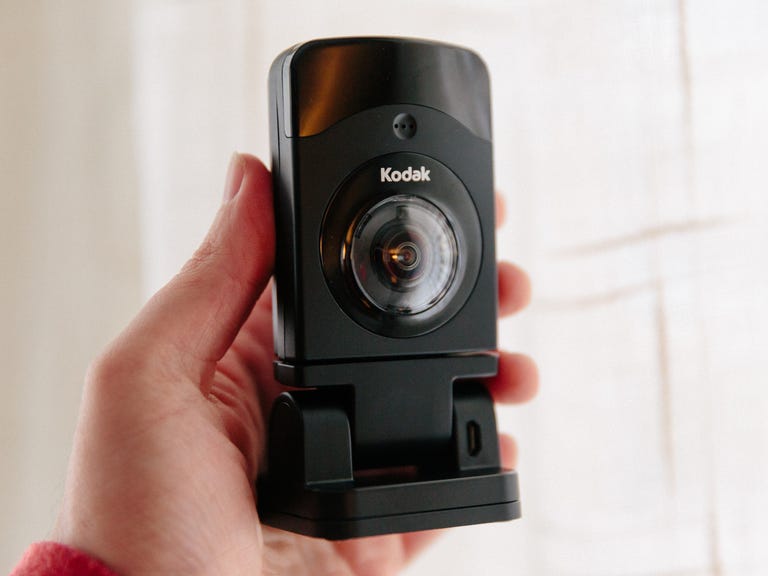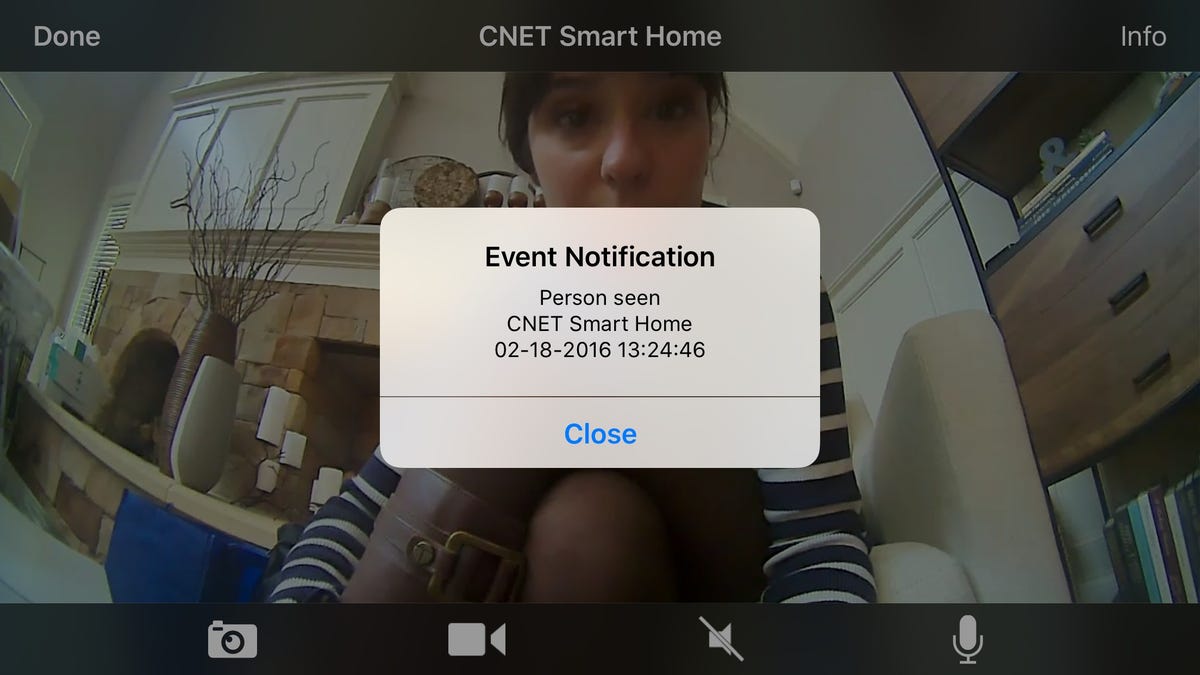 Why You Can Trust CNET
Why You Can Trust CNET Kodak Video Monitor CFH-V20 review: Kodak's people-detecting V20 is smarter than your average security camera
Kodak's $150 Video Monitor CFH-V20 security camera is smart enough to ID the motion activity that matters most -- and ignore the rest.
Kodak isn't new to the world of live-streaming cameras, but its $150 Video Monitor CFH-V20, available in the United States now through Amazon, boasts the most impressive specs in the brand's expanding lineup and is worthy of your consideration for several key reasons.
The Good
The Bad
The Bottom Line
With live video streaming up to 720p quality, a 180-degree field of view, night vision, motion detection and two-way talk via a built-in speaker and microphone, the V20 presents an intriguing alternative to the $150 ArcSoft Simplicam as well as to pricier HD models, like the $200 Flir FX.
Kodak also upgraded its image sensor tech for the V20 (specifically, it has a 3.15-megapixel 1/3-inch sensor -- that's similar to the sensor in Google's impressive Nest Cam) and made it USB-compatible, so you can attach it to a USB battery pack for a security camera that's designed to travel (wherever there's an obliging Wi-Fi network). While the plastic-bodied camera doesn't feel especially sturdy, it does boast a small footprint and a sleek profile for a pretty discreet addition to any room.
The iSecurity+ app is supposed to act as your main point of interaction with the camera and its many features, including free 24-hour cloud storage so you can view recorded video clips on the go. It's a very easy app to use, both during the initial setup and afterward when you want to view the live stream, access settings and more. (There's also an iSecurity+ Web app for those more http-inclined.)
And if one day of saved footage isn't enough, you can pay an optional monthly fee -- either $3, $10 or $20 -- for Smart Detection, a premium option that claims to "eliminate up to 98 percent of false alarms with ART human presence detection" by being able to tell the difference between people and things. The $30 option just gives you people detection, while the $10 and $20 options also add on longer cloud storage periods of 14 and 30 days.
Given that ArcSoft's Simplicam charges $5 for any sort of cloud services and can't be disconnected from its power adapter, Kodak's portable V20 with free, 24-hour clip storage is especially appealing. The V20 also has its own IFTTT channel (iSecurity+) that makes it possible to add an extra dose of features to its standard offerings. (Read about how the CNET Smart Home uses the IFTTT automation service here.) I created a recipe that sent me a text every time the camera detected activity, and it worked consistently.
That was also true of the camera's broader performance capabilities, with the exception of two-way talk, which was nearly impossible to use due to its poor audio quality. Generally though, the Kodak V20 performed well, sending quick push notifications whenever it detected activity. And, even though free cloud storage is included with the purchase, you can also sign up for a free monthlong Smart Detection trial period (after that you have to pay the requisite $3 per month minimum). With this feature enabled, the camera can suddenly tell you whether or not the activity it detected was a human moving within its wide-angle field of view, or something else, like your cat or a tennis ball.
The V20 did a very good job of distinguishing people from things and you can even adjust the settings so that you only receive alerts when a person is detected. Although I can't confirm whether Kodak's ART human presence detection does actually get rid of exactly 98 percent of false alarms, I didn't receive any during my testing. This makes its people detection functionality a pretty reliable security option, but it has questionable value, especially since it can't scan faces to tell you exactly who you're looking at.
The ArcSoft Simplicam costs the same up front (150 bucks), but that $5 monthly fee includes advanced facial recognition that can tell you whether it's seeing a friend or family member (you can scan up to 10 faces into the system) or a stranger. This worked decently well, but wasn't reliable enough to depend on as a security feature. Netatmo's $200 1080p HD Welcome camera can do something similar via free local storage and it worked better than the hit-or-miss Simplicam.
If you're more interested in learning who is walking in front of your camera at a given time, it might be worth splurging on the Welcome. Additionally, 1080p HD cameras like the Nest Cam, Piper, Piper NV, Netatmo Welcome and Samsung SmartCam HD Pro -- all of which cost roughly $50 more than Kodak's V20 -- are currently the "gold standard" for live-streaming resolution. Kodak claims that this camera has the potential to stream in 1080p, but that it's currently limited by its software partner, iSecurity+, to 720p. Still, its 720p quality was fine in both regular and night vision mode.
Even though the V20's Smart Detection feature does a good job of distinguishing people from things, I wouldn't buy this camera strictly for facial recognition. Its IFTTT integration, optional USB-enabled battery pack and wide-angle lens are actually the true stand-outs.
Most 180-degree DIY cameras cost at least $200 if not more and, while IFTTT channels are expanding in the security industry, camera compatibility is still fairly limited compared with other smart home categories. There are even fewer security camera models that have battery-based mobility, even as an optional feature. Still, I expect the V20's poor two-way talk performance and only semi-smart facial recognition feature will be deal breakers for some people.



